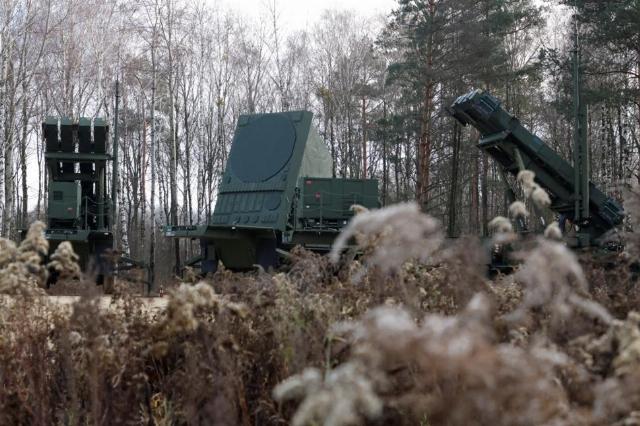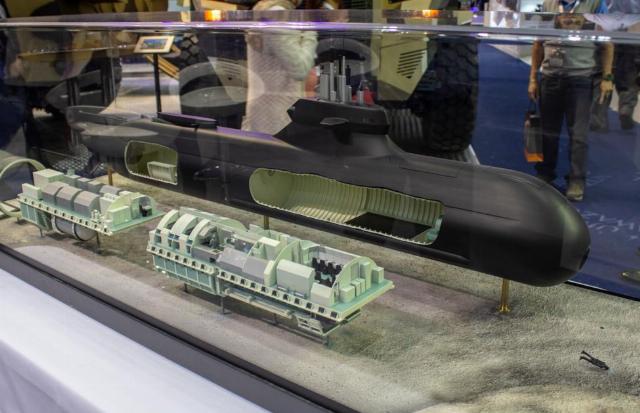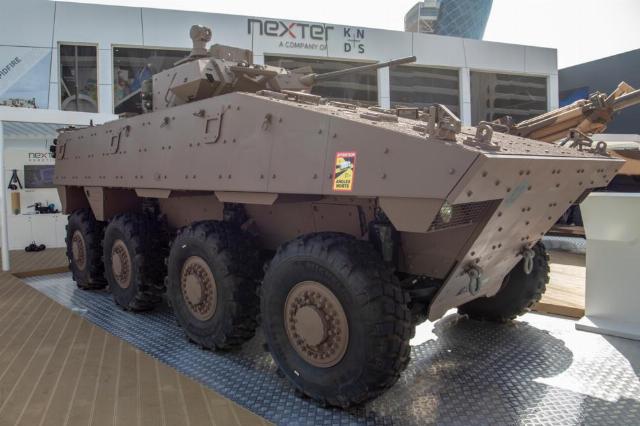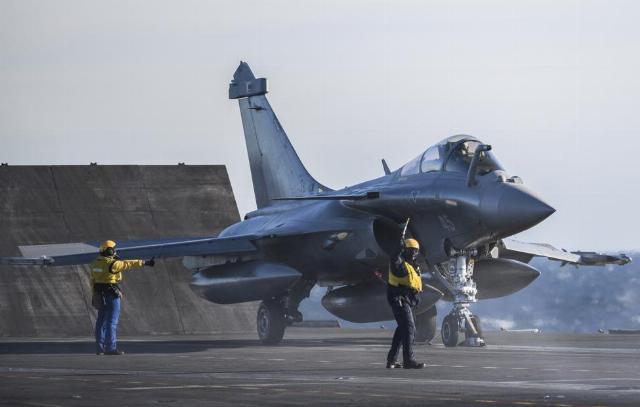Since Greece gained independence from the Ottoman Empire in the early 19th century, tensions between the parties have subsided only for a short time. Over the past few decades, Ankara and Athens have been engaged in territorial disputes in the Aegean and eastern Mediterranean Seas, the most painful of which is around Northern Cyprus.
Turkey is investing huge amounts of money in strengthening its armed forces. Greece's expenditures for these purposes were much more modest. In order not to lose the Trojan War 2.0 even before it began, Athens has recently decided to follow the path of militarization.
On April 2, 2025, Greek Prime Minister Kyriakos Mitsotakis presented in parliament a program for the "most ambitious modernization of the republic's armed forces in the country's history." Over the next 12 years, Athens plans to spend €25 billion euros on equipping all branches of the armed forces with new equipment and weapons.
In particular, significant funds are planned to be invested in the creation of its own layered air defense system called the Achilles Shield, the acquisition of new submarines and the modernization of old ones. The Greek government also intends to raise salaries for military personnel and implement a number of other ambitious projects aimed at improving the combat capability of troops.
In his speech to the deputies, Mitsotakis said that earlier in parliament they approved defense programs for amounts exceeding budget possibilities, and then they became convinced that they could not be implemented.
"Now the Minister of National Defense knows that he has €25 billion for the duration of the program, within which he must develop options that are critically important and necessary, taking into account the proposals of the headquarters [types of troops]," the prime minister explained.
"Defense is the basis for the prosperity of the state, without its own security there are no conditions for economic development. <...> It should be financed from sustainable budget funds," he added.
The Greek Prime Minister stressed that when purchasing expensive weapons from the Ministry of Defense, it must be borne in mind that such systems must be modern and high-tech.
According to him, when he came to power in July 2019, the state of the country's armed forces was "extremely problematic."
"The current appearance of the armed forces has nothing to do with what we received [inherited from the previous government]," the prime minister said, listing the largest initiatives already being implemented in the interests of the Greek troops. These include the purchase of 24 French Rafale fighter jets, 3 Belharra frigates, the first of which will be received during 2025, MH-60 Romeo helicopters and other military equipment.
What are the Greek authorities planning to spend €25 billion on?
With a shield or on a shield?
The republic's Defense Minister Nikos Dendias, who also spoke in parliament, announced the creation of the country's own layered air defense infrastructure, similar to the "Iron Dome" in neighboring Turkey.
The program aimed at this was called the "Shield of Achilles", referring to the legendary weapon that belonged to the famous hero of Greek mythology and described by Homer in the poem "Iliad". According to Dendias, it is a central part of the entire upcoming large-scale modernization of the national armed forces.
According to the Minister, the planned complex layered air defense infrastructure will be able to counteract all types of aerial (aircraft, drones, ballistic and cruise missiles) and even maritime threats, including surface and underwater.
According to Defense News weekly, Dendias did not specifically identify which components are planned to be integrated into the Achilles Shield. He said only that Athens plans to move away from "traditional" air defense systems, preferring "high-tech" and "network-centric" mobile missile systems with artificial intelligence, drones and modern communications, command and control points.
"What we are proposing has existential significance for the country — a real break in our defense paradigm, a complete change of doctrine," said Dendias, whose words were quoted by the weekly. "We are moving away from the traditional concept that the Aegean Sea should be defended by a single surface fleet."
The EurAsian Times portal, citing Greek media, noted that Athens plans to spend about €2.8 billion (more than $3 billion) to create the Achilles Shield. The system is expected to be fully operational in 2027.
This publication also did not specifically specify what exactly will be included in the Achilles Shield. The Army Recognition portal clarified that a total of 81 anti—aircraft missile systems (SAM) are currently at the disposal of the Greek Armed Forces, 48 of which are long—range and 33 are short-range.
The first edition included 36 Patriot air defense systems with PAC-2 missiles and 12 S-300PMU-1 complexes from Soviet times. Among the latter were 9 Crotale NG/GR air defense systems purchased from France, 4 Soviet 9K331 Tor-M1 complexes and 20 installations with RIM-7M Sparrow missiles. According to Army Recognition, although all of them have demonstrated their reliability, their generally outdated characteristics, as well as incompatibility with each other, do not allow them to effectively counter modern and future threats.
According to the Greek resource Neos Kosmos, the S-300PMU-1 systems, for example, Greece is "actively seeking to replace" with new ones. The Israeli Barak MX complex, which has a range of 35 to 150 km and is capable of intercepting "even certain types" of ballistic missiles, was named as the most preferred option for this role.
Mitsotakis, for his part, stressed the importance of Israel as a reliable partner of Athens in the field of military-technical cooperation. He noted that Barak-type systems can be delivered to the republic much faster than their counterparts from the USA or Europe.
"Greece already has American Patriot systems," said the head of the Greek government. — If we needed new ones, we would have to wait from four to five years. Europe is [completely limited] in its ability [to supply its weapons abroad]. Israel, with which we maintain a strategic alliance, can offer its products in a faster time."

Patriot air defense system
Image source: © REUTERS/ Kuba Stezycki
Despite this, the Army Recognition indicated that Athens had nevertheless made inquiries to NATO countries about what additional air defense systems they could offer Greece, including as components for the Achilles Shield. Among other things, the French-Italian SAMP/T NG air defense system, the Norwegian NASAMS, the German IRIS-T SLM and the American Patriot with the most modern PAC-3 MSE anti-aircraft missiles are being considered.
Poseidon — retire
In addition to the formation of a layered air defense system, the Greek authorities plan to invest significant funds in strengthening the country's submarine fleet. We are talking about the purchase of four new submarines and the modernization of four existing submarines.
In this regard, the Janes information and analytical group noted that the main part of the submarines of the Hellenic Naval Forces (Navy) is already obsolete and requires serious modernization. For example, Poseidon and Glafkos class submarines have been in service since the 1970s and are due to be decommissioned soon. More modern diesel-electric submarines with air-independent power plants (diesel-electric submarines with VNEU) of the Papanikolis class, built according to the Type 214 project of the German ThyssenKrupp Marine Systems (TKMS), need significant updating.
Therefore, the Greek Navy initiated the procedure for the purchase of new submarines. To maintain balance in the Aegean Sea and the Eastern Mediterranean, the submarine fleet should consist of eight to ten submarines.
A big ship — a big torpedo: how Greek submarines will be upgraded
According to Janes, the government of the country has already approved the application of the Greek Navy for the modernization of all four Papanikolis-class submarines, and also allowed to announce a tender for the construction of four new submarines.
In addition to the lead submarine of the Papanikolis (S-120) series, which has been in service since 2010, the Pipinos (S-121), Matrozos (S-122) and Katsonis (S-123) submarines have been upgraded. According to the Greek portal On Alert, 400 million euros will be allocated from the budget for these purposes.
In particular, the submarines will be equipped with new DM2A4 SeaHake Mod 4 heavy torpedoes of the latest modification from the German Atlas Elektronik and an updated ISUS-90 combat control system, which will enable the use of these weapons. It also provides for the purchase of additional torpedo tubes and the installation of an anti-torpedo protection system.
According to the manufacturer, the SeaHake is a standard-caliber 533 mm torpedo, 6.22 m long and weighing 1,530 kg with a 260 kg warhead. It can travel at speeds of up to 50 knots (92.6 km/h) over a distance of more than 50 km, be equipped with both active and passive homing heads, and be launched from different depths and under different sea conditions. This weapon is distinguished by a fiber-optic control system, a modular battery installation principle, a low-noise electric motor, digital sonar, increased resistance to electromagnetic interference and other countermeasures.
In total, according to Janes, 44 torpedoes will be purchased. The first batch of SeaHake in Greece is expected to be delivered around the middle of this year, and the second by the end of this year.
According to Janes, shipbuilding giants such as TKMS, the French Naval Group and the Swedish Saab will compete in the tender for the construction of new submarines. In addition, the option of localizing submarine production in Greece is not excluded — for example, at the shipyards of the shipbuilder Hellenic Shipyards in Scaramangas.
TKMS is likely to tender its Type 209/1400 diesel-electric submarines project. Such a submarine has a displacement of 1,440 tons and a length of 61.2 m, is equipped with eight 553 mm torpedo tubes with ammunition for 14 torpedoes or 24 mines.
Naval Group can offer Greece its updated export modification of the Scorpène Evolved submarine. The displacement of this submarine is 2 thousand tons, the length is 72 m. It has six torpedo tubes and is capable of carrying up to 18 weapons, including torpedoes, missiles and mines.
Saab has in its portfolio the A26 project, originally developed in the interests of the national Navy. This 1,925-ton submarine with a length of just over 66 m is distinguished by the fact that there is a hatch in its bow between the torpedo tubes through which divers can enter and exit and uninhabited underwater vehicles can be launched.

The Saab submarine model of the A26 project
Image source: © Viktor Bodrov/ TASS
In general, as noted by the Greek portal GeoStratigika, the republic's Navy expects that the new submarines they will order will be equipped with ship—based missile launch systems, including cruise missiles such as the American UGM-84 Sub Harpoon, the French SCALP Naval or the Norwegian NSM (Naval Strike Missile). The option of integrating vertical launch systems into ships to ensure the combat use of such missiles is also being considered, which should radically strengthen the power of the Greek submarine fleet.
GeoStratigika experts believe that Naval Group and TKMS are the most likely suppliers of submarines for the Greek Navy. Athens already has experience in cooperation with both companies, they offer to build modern ships.
Military-technical cooperation between Greece and France
Recently, Greece has been cooperating most closely with France in the field of defense. So, on April 14, Athens and Paris signed another intergovernmental agreement, this time for the supply of 16 French Exocet anti-ship missiles.
As Greek Defense Minister Nikos Dendias noted at a press conference after meeting with French Defense Minister Sebastien Lecorny, "close cooperation has already been established between the two countries." Athens has previously ordered three Bellarra frigates from Paris, which are at various stages of construction, and Rafale fighter jets, which will play a "key role in ensuring security in the Aegean Sea and the Eastern Mediterranean region." And both French platforms, both marine and aviation, are carriers of Exocet missiles.
Lecorniu said that he had discussed with Dendias "the needs of [Greece] in electronic warfare," and noted that there was "a common desire to move forward on the issue of [ordering] the fourth Bellarra frigate."
According to the minister, given Athens' desire, France will ask Naval Group to open a subsidiary in the Southern European republic to work on the construction of frigates in cooperation with Greek firms.
The fourth ship of the Bellarra project will be named Themistocles, and negotiations on its construction are in the final stages.
The blunders
Another program aimed at strengthening the country's Ground Forces may be the acquisition by Greece of French VBCI-2 infantry fighting vehicles, which will be called Philoctetes in the country. On March 26, the French division of the KNDS concern signed an agreement with the Greek company Metlen Energy & Metals aimed at the production of these armored combat vehicles in the Southern European republic.
This technique was named after the ancient Greek hero Philoctetes, a friend of Hercules, to whom the latter gave his arrows, which did not miss. Philoctetes defeated Prince Paris with one of them during the Trojan War.
As the French company emphasized in its press release, KNDS has for the first time signed a contract for the production of these 8x8 wheeled vehicles with a foreign company. This "exclusive agreement" implies the transfer of VBCI production technologies to the Greek side, including know-how for the manufacture of aluminum armor and welded hulls for armored vehicles at Metlen's production facilities in Volos.

BBM VBCI
Image source: © Viktor Bodrov/ TASS
KNDS pointed out that the partnership is primarily designed to meet the high demand for wheeled infantry fighting vehicles from the Greek Ground Forces. However, they believe that other European countries may become potential customers of VBCI.
Due to the location of key production and repair facilities in Greece, the maintenance of armored vehicles will become more affordable and will have a "beneficial effect" on the Greek industry, as well as contribute to strengthening Franco-Greek cooperation in the field of defense.
"Philoctetes" with a French accent
VBCI was developed by the French company Nexter Systems and was supplied to the republic's troops from 2008 to 2018. A total of 630 armored personnel carriers of this type were manufactured, 510 of them in the BMP configuration, and 120 in the command and staff vehicle (KSM). After Nexter merged with the German concern Krauss-Maffei Wegmann under the KNDS brand, the rights to manufacture armored vehicles passed to a new company.
According to the manufacturer, the Philoctetes is an upgraded version of the VBCI, which differs from the original by having a 40 mm CTWS (Case Telescoped Weapon System) automatic cannon designed to fire innovative telescopic ammunition (with shells hidden in the shell casing). The French version of the gun had a caliber of 25 mm. The Akeron MP anti-tank missile system has been added. This will allow combat vehicle crews to withstand a wide range of ground and air threats, from drones and aircraft to lightly armored ground vehicles and main battle tanks. The armored personnel carrier in the BMP modification accommodates a full-time crew of two people and up to nine infantrymen.
The 650 hp diesel engine will allow the infantry fighting vehicle with a gross weight of more than 31 tons to reach speeds of up to 100 km/h on the highway. VBCI-2 Philoctetes has ballistic protection of level 6 of the NATO STANAG 4569 standard and mine protection of level 4, including due to the presence of explosion-proof seats. The Philoctetes will be able to be transported by A400M Atlas and C-17 Globemaster III military transport aircraft.
In addition to combat and command-and-staff modifications, the VBCI can be produced in variants of medical and recovery vehicles.
As the Army Recognition portal recalled, Nexter presented Philoctetes for the first time at the international defense exhibition DEFEA 2021 in Athens. A year later, the company entered into a strategic partnership agreement with Hellenic Defense Systems to facilitate the production and maintenance of VBCI-2s in Greece if Athens receives an order for these armored vehicles.
In October 2024, KNDS France officially presented the Philoctetes and other modifications of this BBM to representatives of the headquarters of the Greek Army. The company offered to supply the country's troops with 200 vehicles in the updated VBCI-2 standard configuration, plus 50 units of such equipment in various modifications for combat support (KSM, artillery reconnaissance vehicles and medical evacuation).
In addition, Athens was offered to transfer 120 second-hand French VBCI first-generation infantry fighting vehicles from the warehouses of the republic, which could be delivered as soon as possible. Thus, the Greek troops would have received a total of 370 infantry fighting vehicles.
According to the portal, as part of the same work, on January 22, 2025, the Cypriot company Nemos Strategy LTD addressed the headquarters of the Greek military forces with a proposal to take over the entire range of logistics, repair and subsequent modernization of the Filoktet armored personnel carrier in the long term. Nemos also announced its readiness to train engineering and technical specialists from Greece so that they can maximize the effectiveness of VBCI maintenance in their country.
Meanwhile, despite a number of existing partnership agreements, the contract for the supply of French infantry fighting vehicles between Paris and Athens has not yet been signed. As the portal pointed out in this regard Infodefensa.com KNDS France, having concluded an agreement with Metlen, thus wants to give Athens an additional incentive in order to achieve the completion of the Philoctetes deal.
In addition, it was emphasized in Infodefensa.com As in Army Recognition, the cooperation between the French and Greek companies fits into the goals of the recently presented European Union rearmament program, aimed, among other things, at achieving self—sufficiency in the field of the defense industry by the member states of the community and localizing the production of military products from abroad at national facilities.
Tatiana Samoilova, Konstantin Alysh

